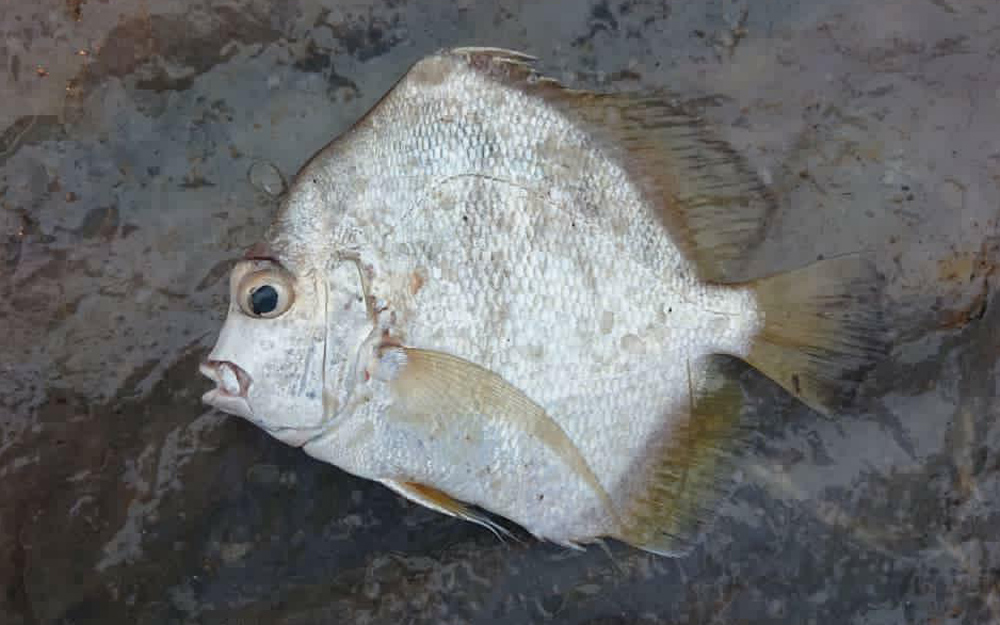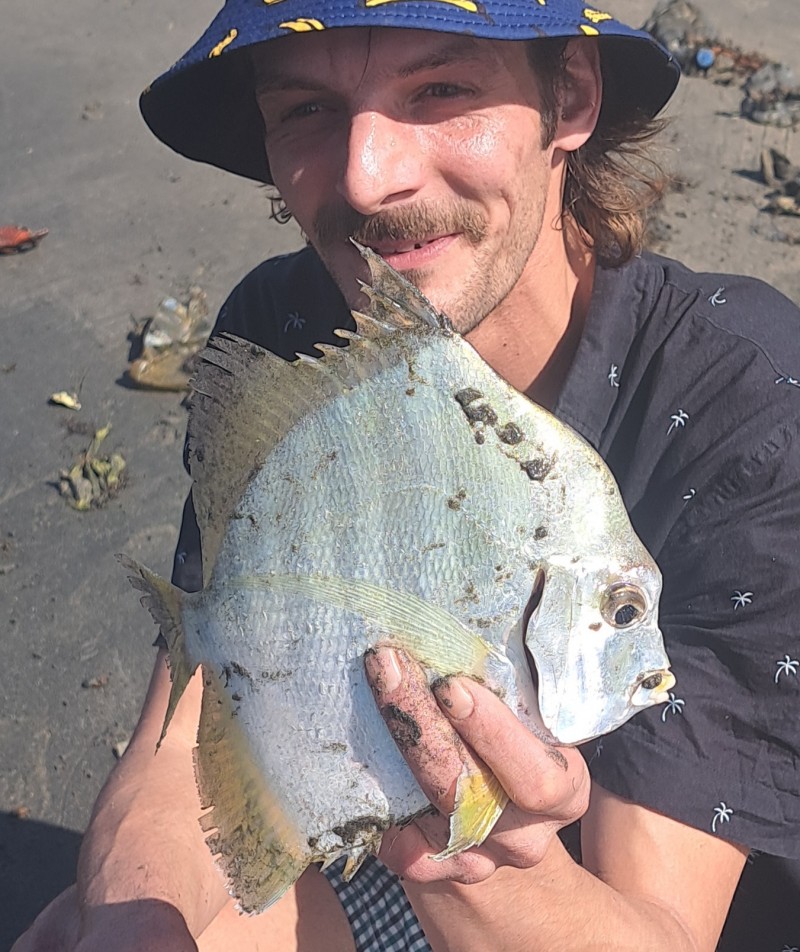African sicklefish
(Drepane africana)

Classification
General data
The African sicklefish (Drepane africana) is a species of ray-finned fish belonging to the family Drepaneidae, the sicklefishes. This fish is found in the costal waters of the eastern Atlantic Ocean from the Canary Islands and Mauritania south to Angola, including the Cape Verde Islands and the islands of the Gulf of Guinea. It is a coastal species found over sandy and muddy bottoms between depths of 10 and 75 m (33 and 246 ft), moving into coastal lagoons at sexual maturity.
The African sicklefish has a deep and strongly compressed body, with the front of the body having a steep, slope to the origin of the dorsal fin. It has a small head with a short snout and a small fleshy-lipped, terminal mouth which its highly protrusible. The teeth are thin and sharp and are arranged in bands in the upper jaw with no teeth in the roof of the mouth.
There is a deep incision in the dorsal fin, that fin being supported by 8 or 9 spines and 17 or 18 soft rays, the first forward-pointing spine being very small and visible only in very young fish. The anal fin is supported by 3 spines and 20 or 21 soft rays. The pectoral fins are sickle-shaped and extend almost as far as the base of the slightly rounded caudal fin. The pelvic fins are located on the thorax.
The fine scales are ctenoid and cover the body, the bases of dorsal and anal fins and head, apart from the snout and preoperculum. The margin of the preoperculum is serrated. They have a lateral line which shows a strong arch. The overall colour is silvery grey darker on the upper body and nearly white on the belly.
There is a series of 8 brown, rather indistinct vertical bars, fading with age, on the flanks.
The African sicklefish reaches a maximum published total length of 45 cm (18 in).











